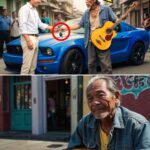It started as whispers—dark, elusive, too disturbing to say out loud. Dozens of men, all linked to the booming world of online cockfighting, suddenly vanished without a trace. Families left in the dark. Authorities scrambling. Suspicions flying. For months, the mystery of the missing sabungeros gripped the nation. And then, Chavit Singson spoke.
The former Ilocos Sur Governor—never one to stay silent on issues that matter to him—has finally broken his silence. In a revelation that shocked even the most seasoned observers, Chavit claimed he knew more than the public had been told. And what he knows, he says, could shift the entire narrative of this chilling case.
Speaking during a recent media interview, Chavit didn’t mince words. “May nalalaman ako,” he said. “At hindi basta-basta ’yan.” His tone was firm, his expression guarded, as though he understood the weight of what he was about to reveal. And then came the bombshell: a web of names, operations, and “higher powers” that he believes are tied to the mysterious disappearances.
According to Chavit, these are not random incidents. The men who vanished were part of something much larger—an underground network deeply intertwined with gambling syndicates and, allegedly, rogue elements within law enforcement. “Hindi ito simpleng pagkawala lang,” he emphasized. “May mga taong ayaw silang magsalita. Kaya sila nawala.”
It was the first time a public figure of his stature openly suggested what many had feared: that these men may have been silenced not by chance, but by design.
The e-sabong industry, once a booming online enterprise during the pandemic, grew into a billion-peso ecosystem. But along with the money came rumors—of debt, betrayal, and backroom deals. When the disappearances began, no one expected answers quickly. But they also didn’t expect the silence to last this long.
Chavit’s voice has now reignited the flame of inquiry. Families of the missing sabungeros, who have waited in anguish for months, are pleading for authorities to take his claims seriously. “Matagal na kaming naghihintay,” said the wife of one victim. “Kung totoo ang sinasabi ni Chavit, sana ito na ang simula ng hustisya.”
What makes his revelation even more disturbing is the suggestion that some victims were “picked up” for knowing too much. Chavit hinted that one of his contacts had warned him: “Kapag masyado kang maraming alam, ikaw ang isusunod.” Whether meant as a threat or a chilling truth, the message was clear: there are forces at play determined to bury the truth.
And yet, Chavit remains undeterred. “Hindi ako natatakot,” he declared. “Basta totoo ang sinasabi ko, lalabas din ang lahat.”
Still, the question lingers: if someone like Chavit—powerful, well-connected, and unafraid—is only now speaking up, how many others have been silenced? And what does this say about a system that allowed such disappearances to go unresolved for so long?
Public reaction has been swift and divided. Some applaud Chavit for stepping forward, calling him “the whistleblower we needed.” Others remain skeptical, questioning his timing and motives. “Bakit ngayon lang?” a comment on social media asked. “Sana noon pa siya nagsalita.”
Even so, many agree on one thing: his voice changes the game. The Department of Justice has reportedly requested a transcript of Chavit’s interview, and several lawmakers are now pushing for him to testify before a Senate inquiry.
For the families of the missing, hope flickers once more. Not because answers have been found—but because someone finally dared to speak. And in a case defined by silence, one voice can echo louder than a hundred questions.
As the investigation reopens, the nation watches. The faces of the missing sabungeros—once fading from headlines—are being remembered again. Their names are being spoken. Their families are standing tall, clinging to the belief that truth, no matter how buried, will find a way to surface.
And maybe, just maybe, Chavit’s words will be the beginning of that unraveling.
News
Exclusive: Uncovering the Truth Behind Malti and Amaal’s Rumored Romance
The entertainment world is abuzz with whispers, theories, and rampant speculation about the mysterious relationship between Malti and Amaal Malik….
Tanya Mittal Under Fire: Fans Appeal to Salman Khan for Intervention
The controversy surrounding Tanya Mittal has shaken the entertainment world and sent shockwaves through social media. Fans of the popular…
Bigg Boss 19 Drama: Unexpected Clash Between Gaurav and Tanya
The Bigg Boss 19 house had been simmering with tension, but nothing could prepare the contestants for the explosive confrontation…
Unexpected Drama: Massive Eviction Rocks Bigg Boss 19 House Ahead of Weekend Ka Vaar
The Bigg Boss 19 house had been simmering with tension, strategies, and unspoken rivalries, but nothing could prepare the contestants…
Bigg Boss 19 Drama Alert: Power Shift as Pranit More Supports Gaurav Khanna
The Bigg Boss 19 house had been simmering with tension, rivalries, and subtle strategic maneuvers when the doors burst open…
Bigg Boss 19 Drama Alert: Explosive Amaal-Farrhana Conflict Amid Pranit’s Return
The Bigg Boss 19 house had been simmering with drama and delicate alliances when the unexpected happened. Pranit More, a…
End of content
No more pages to load












